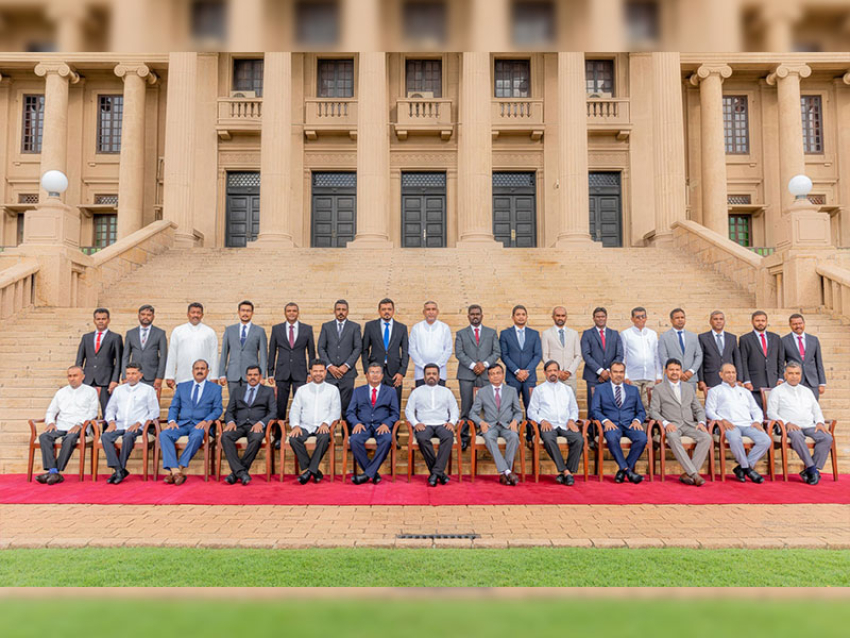(CNN) — When China's air industry hits the news, stories are typically centered on passengers going rogue, punching each other, trying to wrestle open emergency doors mid-takeoff or dangerously tossing coins into airplane engines for luck.
While alarming and fascinating in equal measure, these headlines conceal another tale -- one of a country undergoing a breakneck expansion into the world of flying as its people take to the sky in rapidly increasing numbers.
In the space of barely more than a decade, China has transformed from a nation where few had ever experienced air travel to one where millions of its citizens are flying not only across their own vast territory, but to destinations around the world.
Such is the pace of China's ascension to the jet age that stories of wayward passengers are perhaps inevitable -- even if they obscure the fact that many air journeys in China are incident free.
But there's more to come. Much, much more.Beijing's new Daxing International Airport conducted its first flight tests with passenger aircraft on May 13.
Even as China is on course to overtake the United States as the world's biggest air travel market within the next three years, the country's hunger for aviation seems set to continue growing exponentially.
To sate that hunger, the government has embarked on an airport building program on a scale rarely witnessed before anywhere. Billions upon billions of dollars are being poured into runways and terminals that will plug the entire country directly into the global transport network.
China currently has around 235 airports, but with many lacking the capacity to sustain the coming increase in passenger numbers and flights, government officials estimate around 450 airports will be needed across the country by 2035.
That's the same year aviation analysts predict China will be handling a quarter of all the world's air passengers.
Related content
Inside India's aviation revolution and what it means for travelers
Cheung Kwok Law, director of policy at the Chinese University of Hong Kong's Aviation Policy and Research Centre, tells CNN Travel Beijing's super-heated expansion into aviation is aimed at future-proofing against demand but also to generate economic growth.
"The government is really looking ahead," he says, "not only to meet the current demand but to stimulate future demand for air transportation."
While much of this expansion is taking place in cities and districts that many people outside of China or Asia may never have heard of, it's also highly visible in Beijing, where construction on the multibillion-dollar Daxing International Airport has just entered its final phase, with the first round of flight tests taking place on May 14.
The new Beijing Daxing International Airport is said to have the world's largest single terminal and is designed to handle more than 100 million passengers annually.
The new Beijing Daxing International Airport is said to have the world's largest single terminal and is designed to handle more than 100 million passengers annually.
Kevin Frayer/Getty Images AsiaPac/Getty Images
As we move towards the third decade of the 21st century, airport superhubs are nothing new. But Beijing's sprawling creation -- designed by the late architect Zaha Hadid and her Chinese partners -- is almost breathtaking in its ambition.
Due to open in September of 2019, it will feature four runways and a terminal the size of 97 soccer pitches.
Related content
The most exciting new airports opening in 2019
China's capital has long been in need of a second global gateway.
Handling more than 100 million passengers in 2018, Beijing's existing Capital International Airport is now the second busiest airport in the world after Hartsfield-Jackson Atlanta International Airport and is hitting full capacity.
When the new Daxing Airport opens, Beijing Capital will not close. Instead it will continue to handle airlines like Air China and Hainan Airlines, giving the city an extra boost of capacity as the number of air travelers shows no sign of abating.
Where are the airports needed most?
While China's plan to build more than 200 airport facilities may seem extraordinary, it is the speed rather than the scale of this ambition that is remarkable. It still pales beside the 5,000 public airports serving US towns, cities and communities.
"I don't think the expansion of airports is excessive at all," says Law.
"There are three international airports in New York and five in London; Beijing will open its second airport this year. Shanghai, with over 20 million people, will construct its third airport and Guangzhou, with 17 million people, will construct its second airport."
According to the Civil Aviation Administration of China (CAAC), in 2018, Chinese airports handled 1.264 billion passengers, up 10.2% over 2017, with 37 of the country's airports handling over 10 million passengers in a year.
Beijing Daxing Airport
Beijing Daxing International Airport, seen here in a rendering, will open in September, 2019.
Courtesy Zaha Hadid Architects
At present an average of eight new airports are opening in the country every year, while some facilities are being expanded and upgraded -- but there are concerns within China that those already open are failing to meet modern expectations.
Related content
These are the world's best airports for 2019
"Service has improved substantially, but existing airports are far from adequate and are unevenly distributed throughout the country," Dong Faxin, director of CAAC's development and planning department, said in a report issued late last year outlining China's airport construction ambitions.
A large chunk of the upcoming facilities will be located in the Yangtze River Delta region, the Beijing-Tianjin-Hebei region and the Guangdong-Hong Kong-Macau Greater Bay Area, as well as the Chongqing and Chengdu city clusters.
These are the areas with the highest populations but rely on a few hub airports to handle all passenger traffic. In the coming years, they will each have new world-class airports for their individual centers of population.
Shanghai Pudong International Airport is China's second busiest airport after Beijing Capitol.
Shanghai Pudong International Airport is China's second busiest airport after Beijing Capitol.
JOHANNES EISELE/AFP/AFP/Getty Images
Chengdu Tianfu International Airport, for example, will open in 2020. It'll be Chengdu's second aviation hub, easing the pressure on busy Shuangliu International Airport.
New airports will also be built in China's west, where there are currently fewer facilities. This will aid the development of this region both for business and tourism but also further Beijing's push to exert its influence over far-flung regions.
"The mainland government has a very clear development strategy to promote the economic development in the less developed areas and locations like the western and northeastern parts of China," says Law.
"Providing air traffic support will be vital to the development of these areas and to achieve a more balanced economic development between the coastal region and more remote areas."
Chengdu's new Tianfu International Airport, due to open in 2020, was designed by a consortium made up of the China Southwest Architectural Design and Research Institute, China Airport Construction Group Corporation and French architectural firm ADP Ingenierie.
Chengdu's new Tianfu International Airport, due to open in 2020, was designed by a consortium made up of the China Southwest Architectural Design and Research Institute, China Airport Construction Group Corporation and French architectural firm ADP Ingenierie.
ADP Ingénierie
Airports for the future
The upside to building new airports from scratch is that each facility can be developed to meet today's high-tech demands while also keeping growth and wider transport infrastructure in mind.
Airports today are not standalone facilities and the most efficient seamlessly link with other modes of transport such as major road arteries and the country's high-speed rail network, which the Chinese government has been promoting heavily.
The flagship new Daxing airport is seen as a blueprint, albeit on a much bigger scale, for others, incorporating a 350-kilometer per hour rail link to the city.
It will initially accommodate 72 million passengers and two million tons of cargo annually, rising to at least 100 million passengers and four million tons of cargo a year when fully opened.
Daxing's creators are also redesigning the way passengers use airports by combining one of the world's largest terminal buildings with short walking distances, allowing travelers to easily reach their gates through a unique layout and design.
Economic setbacks loom
In many respects it seems China is unstoppable in its growth. Building hundreds of new airports is merely one step for a country reinventing itself on the way to becoming the next major superpower.
However, there are doubts the country's economy will hold up long enough, or attain the expected levels of growth, to see all these planned airports become a reality.
The recent economic slowdown is the worst some analysts have seen, exacerbated by a trade war with the United States and slumping sales in some key areas.
Related content
The most exciting new airports opening in 2019
If a slump in tourism coincides with this dip, it could leave many of the planned airports on the drawing board -- especially those built as a response to growing inbound tourism. Any hit to the economy would also reduce the amount of outbound travel undertaken by Chinese citizens.
But Law is optimistic about the situation.
"By 2035, it's expected global passenger travel will increase by 3.5% annually," he says.
"If you look at China, growth could be between 5-6% on average, much higher than the global average. In one estimation, China is expected to have a middle class population of more than 500 million in the next 10 years.
"So the economy may be slowing down moderately but the rising of the middle class will provide support to the aviation development in China -- both in terms of passenger demand as well as the demand for cargo transportation."
Hainan Airlines
Experts worry that if the economy slows down, many of these future airports will barely have any flights.
Matt Falcus
Possible road blocks: Staff shortages, airspace imbalances
However, Law does acknowledge there will be challenges -- including a potential staff shortage.
"Globally, the current generation of aviation professionals will be retiring at a faster pace in the next five to 10 years," he says.
"While China plans to expand rapidly in the next decades, they will be facing an acute shortage in manpower and so far, I do not see the government paying sufficient attention on this subject."
The environmental impact of air traffic increases is also a concern.
Earlier this year, the UN launched its Carbon Offsetting and Reduction Scheme for International Aviation (CORSIA), aimed at addressing increases in total CO2 emissions from international civil aviation.
Under the scheme, airlines in countries that have voluntarily opted to participate will be required to buy carbon offsets to compensate for their growth in CO2 emissions, and would begin tracking these emissions from January 1, 2019.
Related content
Inside Changi Airport Singapore's new 'Jewel,' home to world's tallest indoor waterfall
As of May 6, 80 states, representing 76.63% of international aviation activity, stated their intention to voluntarily participate in CORSIA. Unlike the US, China is not among them, though participation is mandatory as of 2027.
According to data compiled by Australia's Griffith University's Institute for Tourism, in 2018 the US emitted 22.7% of all passenger Co2 emissions, followed by China at 10.4%.
Another problem is China's notorious airspace management, which is largely to blame for consistent flight delays. Civil aviation only accounts for 20% of all traffic while the military controls 80%. In the US, the situation is reversed.
"In this respect, the rapid expansion of the civil aviation activities and the congestion of the airspace management will become more serious," says Law.
"In the country's 13th five-year plan, there are a couple of statements indicating the government will work on the liberalization and the restructuring of its airspace management -- but without further information [on how or when it will do this]."
For passengers, the improvements can't come soon enough.
Any increase in efficiency and choice combined with delay reductions can only be of benefit in a country with a seemingly insatiable demand for air travel -- and should result in fewer rogue passengers hitting the headlines
-




















